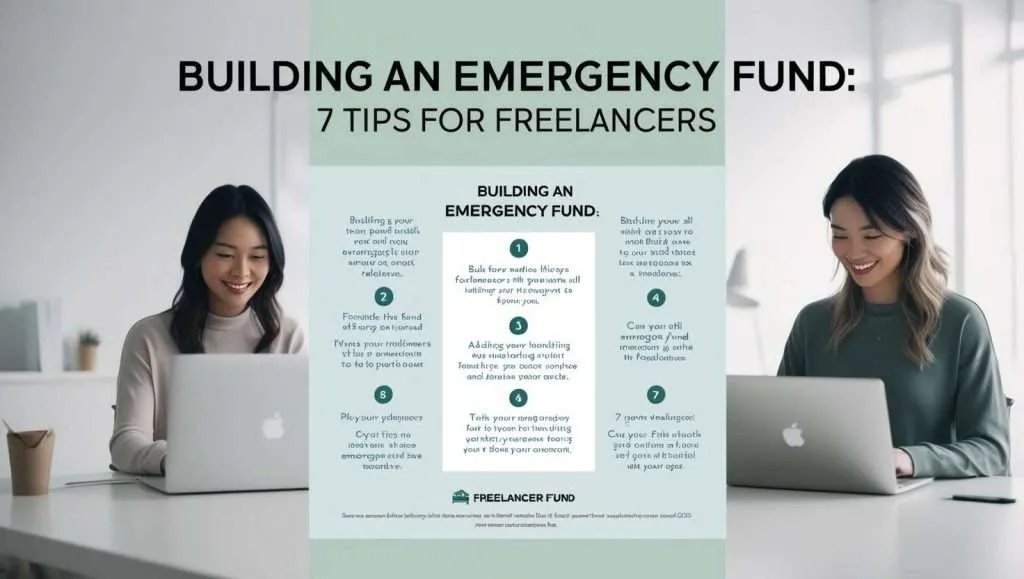Life can be unpredictable, and your financial stability depends on how well you prepare for the unexpected. An emergency fund acts as a safety net to help you cover sudden expenses—whether it’s medical bills, car repairs, or a temporary job loss. The COVID-19 pandemic showed us all how vital it is to be prepared, especially for industries that rely on fluctuating incomes.
If you're a freelancer or just starting your first job, building an emergency fund can seem daunting. Entry-level salaries, student loan payments, and the unpredictable nature of freelance work might leave you wondering how to start saving. But don’t worry—the road to financial security is closer than you think. With the right strategies, you can build a strong safety net, no matter where you are in your career.
Here are practical, actionable tips to help freelancers and entry-level workers save for an emergency fund:
1. Open a Separate Savings Account
One of the easiest ways to avoid dipping into your emergency fund is to keep it separate from your everyday spending money. Open a dedicated savings account for your emergency fund. This will help you resist the temptation to use it for non-emergencies and also allow your savings to grow over time with interest. Look for an account with low fees and easy access in case of urgent needs, but don’t link it directly to your debit card to avoid impulsive withdrawals.
If you're in the Philippines, digital banks like Maya offer competitive interest rates and low fees. With up to 15% annual interest, your emergency fund will grow significantly over time, while Maya’s low overhead costs (no physical branches) keep things affordable for you.
2. Set Achievable Savings Goals
Building an emergency fund may feel overwhelming if you're just starting, but don’t let the bigger picture scare you. Start with smaller, achievable goals. For example, you could aim to save PHP 50,000 to cover minor emergencies. Once you hit that target, build on it until you have enough to cover three months’ worth of living expenses.
Remember, progress is progress—no goal is too small to celebrate.
3. Budget Smartly
You’ll have an easier time saving if you know where your money is going. Track your expenses for a couple of months to identify patterns. From there, create a budget that prioritizes savings. Set up automatic transfers to your emergency savings account after each paycheck to make saving effortless.
You can also create sub-accounts for different savings goals—one for your emergency fund, one for other goals, etc. This makes budgeting more organized and manageable.
4. Adapt to Irregular Incomes
Freelancers and those with fluctuating incomes often find it hard to stick to a fixed savings plan. Instead of saving a set amount, consider saving a percentage of every payment you receive. For example, try saving 10-20% of each freelance invoice. On higher-income months, increase your savings. Open a separate account for business expenses so you don’t dip into your emergency fund for work-related costs.
5. Cut Unnecessary Expenses
Building your emergency fund isn’t just about saving more—it’s also about spending less. Evaluate your monthly expenses to see where you can cut back. Cancel unused subscriptions, negotiate lower bills, or switch to cheaper alternatives for services you use. Small lifestyle changes—like cooking at home instead of dining out—can free up cash to accelerate your savings.
Over time, these little adjustments will add up and speed up your progress.
6. Practice Financial Discipline
An emergency fund is only useful if you leave it untouched—except for true emergencies. Set clear guidelines for what qualifies as an “emergency” (e.g., unexpected medical bills or essential home repairs). Reward yourself for hitting savings milestones, but make sure those rewards don’t come from your emergency fund. Discipline is key to making your emergency savings a long-term habit.
7. Reassess Your Savings Regularly
Your life and expenses will change over time, so your emergency fund should, too. Review your fund every six months to ensure it’s aligned with your current financial needs. Whether you're moving to a new city, taking on more responsibilities, or dealing with inflation, adjusting your target savings amount will keep you on track.
Bottom Line: Start Small, Stay Disciplined, and Build Confidence
An emergency fund is not just about protecting yourself financially—it’s also about giving you peace of mind. It’s the foundation of a resilient, secure financial future. Start small, stay disciplined, and adjust your savings goals as life evolves. Even if you’re just starting out as a freelancer or in your first job, now is the best time to begin building your emergency fund. Your future self will thank you for it!
FAQs
Q: How much should I save in an emergency fund?
Aim to save three to six months' worth of living expenses. If you're just starting, begin with smaller, more achievable goals and work your way up.
Q: How can I save money if I don’t have a steady income?
Try saving a percentage of each payment you receive (e.g., 10-20%). This allows your savings to grow proportionally to your income.
Q: Can I use my emergency fund for regular expenses?
Your emergency fund should only be used for unexpected expenses, such as medical bills, car repairs, or job loss. Treat it as a safety net—don’t dip into it unless absolutely necessary.
This version uses a straightforward, easy-to-follow tone that aligns with the way Americans tend to process financial information. It's concise, engaging, and provides actionable tips that are relevant to the reader's situation.
